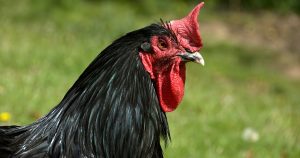Some of the links in this post may contain affiliate links for your convenience. As an Amazon associate I earn from qualifying purchases.
Homeschooling is quite an undertaking, but one of the great benefits of homeschooling is that you can teach your kids the real-world life skills you think they will need to survive, not what some bureaucrat decreed. (For the life of me, I still can’t see why I needed that many years of math in high school!) While different parents naturally have different focuses for their kids, you probably see the benefit of having your kids learn homesteading and outdoor skills. After all, you are on The Survival Mom website! So, let’s look at some things that are natural fits.
Is it easy to integrate survival skills into a homeschool curriculum?
Happily, it’s easy for even busy and overwhelmed parents to work many of these into your homeschool curriculum! While some subjects (such as firearm instruction) may be best taught by a professional, other survival skills fit easily and naturally into a homeschooling curriculum.
Many activities can be easily integrated into a homeschool curriculum as part of physical education (PE), art, language arts, history, and science classes. For example, PE curriculum could include nature or history hike, time spent chopping and building with wood, learning frontier skills, etc. Cooking and baking are so easy (fractions, chemistry, other cultures, history…), we aren’t covering them here.
Even if you don’t homeschool, these are still great family activities and if your kids are in 4H or Scouts, those are great places for these and similar activities.
Survival Skills in Homeschooling
Local Botany
Having a general knowledge of herbs and plants is valuable, but it’s more useful to know and teach your kids about plants that grow around where you live or spend a lot of time.. Teaching your children about the plants that grow around them can be both educational and enjoyable. For example:
- Engage them in activities like identifying leaves, discussing distinguishing features like color, berries, and bark, which are not only fun but also informative.
- Tracing leaf shapes and discussing identifying features such as color, berries and bark are fun and educational activities to do with even very young kid.
- Discuss which blooms, berries, and types of bark are edible and which are used medicinally. Spend time discussing how these plants can be prepared for consumption or medicinal purposes, often serving both functions, such as a tea made from dandelions for gastro-intestinal complaints or chamomile to promote sleep.
- Also, many edible plants have look-alikes and you can get into trouble fast if you don’t really know what you are doing, so make sure to cover thoroughly those as well.
- During a camping trip (preferably car-camping, but something where you can get to medical help quickly, if needed), have them try to cook a recipe using ingredients they foraged – and you carefully reviewed for safety. The last is critical so you don’t accidentally get ill from a look-alike; this is also the reason to do this somewhere you can get medical help quickly. If your kids object, just remind/show them what happened in The Hunger Games when someone ate the wrong berries.
- As your kids grow older, you may also want to go into more detail about how plants are used as medicine, different types of preparations, and how they may interact with other herbs or newer medications.
Expert Tip: Haven’t started homeschooling yet? Confused by all the curriculum choices? You may want to read 102 Top Picks for Homeschool Curriculum by curriculum expert Cathy Duffy.
Home Economics
Also known as family and consumer science by some, “home ec,” as we used to call it, covers a wide range of topics such as:
- Cooking and nutrition, which includes how to efficiently use limited resources, cooking over open flames, and creating nutritious meals from scratch. Also understanding the nutritional value of different foods in order to make strategic choices that sustain energy and health during emergencies.
- Personal finance goes beyond budgeting and saving—it’s about the knowledge to plan for economic stability, manage resources effectively, and weather financial storms. From budgeting for essential supplies to saving for emergencies and understanding the value of barter and trade in survival scenarios to exploring side gigs and additional income streams, personal finance in this context equips individuals to navigate economic uncertainties and sustain themselves and their families when traditional financial systems are disrupted.
- Home management, could include understanding the essentials of shelter, maintaining and repairing the home.
- Health and wellness extends far beyond mere physical fitness; it encompasses a comprehensive understanding of well-being. It equips individuals with essential knowledge and practices to maintain their physical and mental health, ensuring they remain resilient in adverse conditions. From taking care of personal hygiene and stress management to first aid and emergency preparedness, this topic empowers kids to better care for themselves and others in times of crisis. By mastering health and wellness as survival skills, individuals can not only endure physical challenges but also maintain their mental and emotional strength, making them better equipped to face and overcome adversity.
- Life skills and career development lay the foundation for an individual’s adaptability and self-sufficiency. From job search and employment skills to workplace etiquette and professionalism, it equips individuals to secure and maintain employment even in challenging circumstances. Moreover, it fosters resilience by teaching problem-solving, decision-making, and communication skills that are vital in both personal and professional life.
- Community engagement and service extends beyond mere acts of goodwill; it nurtures the collaborative spirit necessary for collective survival. It empowers individuals to actively participate in their communities, building networks of support and mutual assistance. From volunteering to social responsibility and advocacy for social and environmental causes, community engagement and service teach individuals the importance of unity and cooperation in times of crisis.
Astronomy
Stars are our great calendar in the sky. They help us identify seasons for farming; the moon’s cycle can help you plan your garden season. They help us navigate on land and at sea. None of this can help us, however, if we can’t tell Polaris from the moon.
One of the best ways to learn about astronomy and constellations is with stories that have been passed down to help us remember the shape of star formations. The most accessible and common are the classical Greek and Roman mythologies, and Native American legends, but there are many others. Hina and the Sea of Stars is a picture book about the legend of the Hawaiian Goddess Hina and the moon.
You can integrate these stories into a reading program, make up your own star stories as part of a creative writing project, or simply use them in a history or cultural unit.
Kids can also create beautiful artwork using actual constellations, and a visit to a nearby planetarium could be the culminating activity of your study of astronomy.
The ultimate goal of this study is that kids will have a better idea of using the night sky to navigate.
Meteorology
Start out with a regular outside thermometer and a notebook. Don’t use a digital thermometer because you want your kids to be able to read a basic one. Track temperature and weather conditions (such as windy or cloudy) that affect the temperature they feel. For example, it may be 60* F, but with wind shear it may feel much colder.
Discuss how the weather affects us daily. Talk about what to wear if the weather is dangerous, and survival tactics to beat the cold or heat. Discuss historical examples of how people survived in dangerous weather and how other cultures (Eskimos, Bedouin) adapted to extreme climates. Also discuss how to know which way the weather is traveling.
Clouds are mostly classified by the way they look, using Latin root words. Cirrus, for example, means “curl of hair”. It is also important to note how high or low a cloud may be. What a cloud is made of can be determined by how high it is elevated. For example, a high level cloud is composed mostly of ice crystals due to the temperature of the altitude it is at. A low level cloud, however, will usually be mostly composed of water droplets.
By learning about basic weather features and patterns, kids can become more capable of outdoor survival.
Art
Art may seem like an odd addition to a survival curriculum, but it’s actually pretty important for any child learning survival to be able to create useful items with what’s around them. Art does not just apply to painting on a canvas or making a bust of a stranger’s face.
Art could apply to shelter building, creating star charts, or local maps. Sewing, knitting, or crochet can create useful items such as blankets or clothing. Spinning yarn is another option. It is easy to plan an art curriculum that results in things that can be put to good use.
Final Thoughts
Wherever you look, there are things to teach our kids that relate to survival and preparedness. There are also groups and clubs where children learn important life skills. Whether it is how to safely start a fire (old school methods like using a flint lend themselves to studying geology), safe driving (physics, or how a safety belt or bike helmet keeps you safe), or any of a thousand other moments in daily life, we all make choices about what we are going to focus on and teach our kids.
It’s never as simple in real life as it sounds in our heads, but the choice to focus on teaching preparedness skills to your kids really is yours, and yours alone. Even when you are just having a fun relaxing time, you can choose to play Doom and Bloom SURVIVAL! or Life. Both are fun board games, but only one includes “Preppertown” as a location. No, you probably won’t learn new skills playing a board game, but wouldn’t you rather have your kids thinking about what resources they might need in an emergency instead of pretty much anything related to an animated character?
By integrating survival skills into different subjects, homeschoolers can develop a well-rounded skill set that combines academic knowledge with practical abilities, fostering self-reliance and preparedness for various real-world scenarios.
How do you incorporate survival skills into your homeschooling plan?
Originally published 12/30/2104.

















